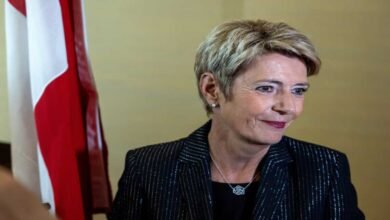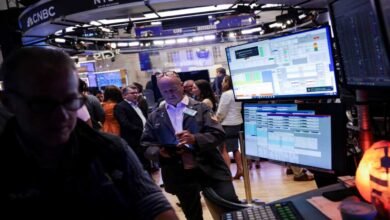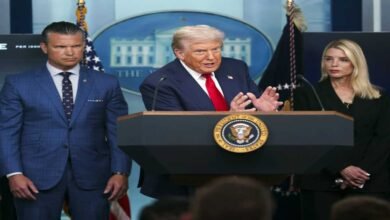
LOUISVILLE, KY – Ford Motor Company has officially unveiled a new, radically simplified “Universal EV Platform” designed to underpin a new generation of affordable electric vehicles, starting with a mid-sized pickup truck slated for a 2027 launch. The announcement signals a monumental strategic shift for the Detroit automaker as it positions itself to compete directly with global EV leaders.
At an event held on the factory floor of its historic Louisville Assembly Plant, Ford President and CEO Jim Farley called the initiative a “Model T moment” for the company, capable of reshaping the industry.
“In our careers as automobile people, we’re lucky if we get to work on one, maybe two projects to really change the face of our industry, and I believe today is going to light the match as one of those projects for all of us here,” Farley told an audience of plant workers, media, and politicians.
The new platform is the culmination of a three-year secret project developed by a “skunkworks” team in California. The team was given the freedom to design a new generation of EVs free from traditional corporate bureaucracy and legacy manufacturing constraints.
A Revolution in Manufacturing
Central to the announcement is a completely transformed production method called the “Ford Universal EV Production System.” Moving away from the singular assembly line, the new system uses an “assembly tree” with three concurrent sub-assemblies that are joined together at the end.
Key innovations include:
-
Large Castings: Following a trend popularized by Tesla, Ford will use large, single-piece castings for vehicle ends, replacing numerous smaller parts.
-
Structural Battery: The platform features a skateboard-style structural battery using prismatic LiFePO4 cells sourced from Ford’s BlueOval Battery Park in Michigan.
-
Efficiency and Ergonomics: The new process is designed to assemble vehicles up to 40% faster than the current Ford Escape and dramatically improves ergonomics for assembly line workers by reducing the need to twist, bend, and reach.
“This is a mountain-moving top-to-bottom redesign, not only for the final product, but for the way that final product is made,” Farley stated.
Louisville Plant at the Center of Transformation
The first vehicle built on this platform will be a yet-to-be-named mid-sized truck. Ford plans for it to have more interior space than the best-selling Toyota RAV4, while also featuring a frunk and a full pickup bed.
The Louisville Assembly Plant, which opened in 1955, will be highly transformed and expanded by 52,000 square feet to accommodate the new production system. The first models of the new truck are expected to roll off the redesigned assembly line in 2027, with a target starting price point around $30,000.
A Direct Answer to Global Competition
Farley was candid about the competitive pressures driving this radical new approach, specifically citing the rise of Chinese automakers.
“The automotive industry in America is at a crossroads,” he said. “We saw this coming for years, we knew that the Chinese would be the major player for us globally, companies like BYD… they’re all coming for us legacy automotive companies. We needed a radical approach… to create an affordable vehicle that delights customers.”
While Ford did not release specific details on vehicle range, battery size, or charging speeds, executives presented a confident vision for the company’s future. The event, attended by Kentucky Governor Andy Beshear and other local leaders, emphasized that the success of this monumental shift will depend on the full commitment of its entire workforce.





